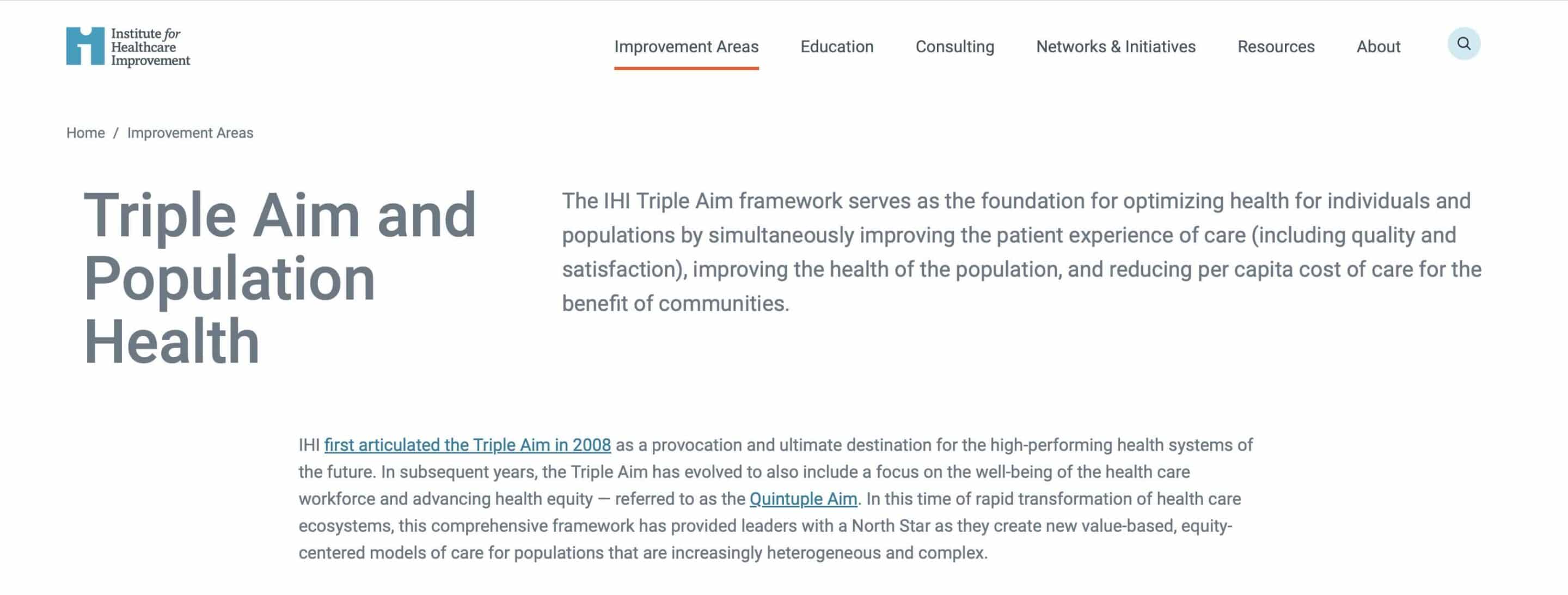This resource focuses on the IHI Triple Aim framework for optimizing health by improving patient care, health outcomes, and cost-efficiency.

Related Topics
Disease Tracking and Surveillance
Disease surveillance helps us detect disease cases, understand burden of disease and risk factors, provide the basis for timely and informed decision-making, guide control measures, and monitor impacts. Since the onset of COVID-19, surveillance efforts have worked to provide real-time tracking and forecast data, despite challenges with diagnostic capacity, case reporting, insufficient contact tracing, and fragmented data systems. COVID-19 has highlighted the need to invest in modern data systems, expand and skill up the workforce, and ensure data reporting and interpretation retain high ethical and epidemiological standards.
Public Health Authority
The authority to act to protect and promote the public's health has emerged over the course of our Nation’s history, and has enabled many of modern public health’s greatest achievements. Today, public health agencies use their authority to promote health, prevent the spread of infectious disease, protect against environmental hazards, advance equity and assure local public health infrastructure and health services. During declared emergencies, state and federal authorities have broader powers to act to assist governments, suspend or modify legal requirements, pass and enforce law and expend funds for the health, safety and welfare of society. Recently, some states have moved to limit public health powers. Such efforts pose a mounting challenge for public health’s response to COVID-19 and future threats.
Public Health Workforce Development and Diversity
The public health workforce plays an essential role in securing the vital conditions for health and well-being for all to thrive. A skilled, resourced, and robust public health workforce is needed to meet the demands of public health today and prepare for the needs of tomorrow. A diverse public health workforce is better equipped to address the needs of the most impacted and marginalized, and implement population health strategies. COVID-19 has shed light on challenges facing the public health workforce, while also exacerbating them. The COVID-19 pandemic has emphasized the need to skill up the workforce; support workers’ needs; center equity in workforce development efforts; and plan for the future.
Supporting Public Health and Frontline Workers
The COVID-19 pandemic has put immense pressure on frontline and public health workers, exacerbating myriad mental health concerns, including stress, depression, and burnout. As with COVID-19 itself, impacts have disproportionately affected certain populations more likely to hold frontline positions, including women, LatinX people, and people of color. These challenges, compounded with broader issues affecting the workforce, undermine the capacities of frontline and public health workers to provide essential services. Key strategies for supporting frontline and public health workers include building a culture of caring across leadership and organizations, improving employment practices and working conditions, and fostering social support among workers.
